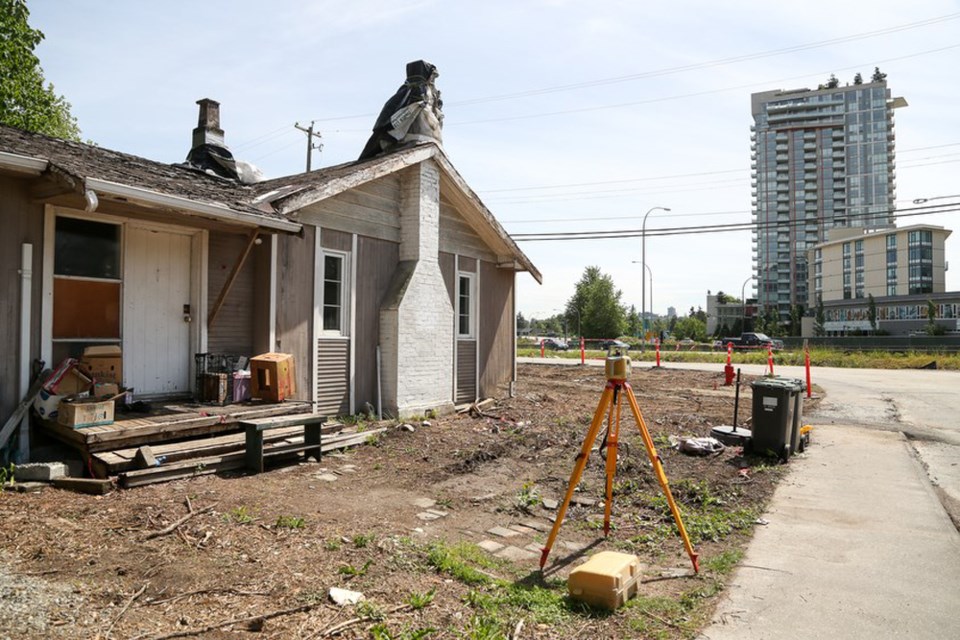The District of North Vancouver has been ordered to pay more than $900,000 to a woman whose property was expropriated for the Lower Lynn Highway 1 improvement project.
A B.C. Supreme Court ruling released this week finds the district underpaid Juanna Hanlon for her home at 750 Forsman Ave., which she had lived in for 20 years prior to the 2018 expropriation to make way for the new infrastructure.
Under the Expropriation Act, an owner must be compensated for the market value of their property, plus reasonable damages. The district paid Hanlon $2 million ($1.68 million for the property, and the rest in damages) in November 2018. That worked out to $225 per buildable square foot on the 9,332-square-foot lot, court documents show.
Hanlon challenged the valuation in court, arguing the district’s appraiser used a flawed methodology and chose the wrong properties to compare hers to. In December 2019, she produced her own appraisal, which asserted the property had a market value of $3.2 million, or $430 per buildable square foot.
The judge noted the odd evolution the Lynnmour neighbourhood has gone through over the years, having been largely agricultural early in the century. In 1961, the construction of the Upper Levels Highway to the south physically isolated the neighbourhood.
“During these years, Lynnmour became a somewhat forgotten neighbourhood, largely occupied by modest mid-century bungalows like the plaintiff’s 1,700-square-foot house,” Justice David Crerar wrote in his decision.
In the 1990s and 2000s, the municipality’s landfill to the north was covered over and converted to sports fields. Today, the neighbourhood is home mostly to multi-family homes, and it remains desirable, both for home buyers and developers, Crerar noted.
The ruling delves into the arcane world of how properties are valued when it comes to expropriation, and offers a window into a rapidly heating housing market at the time.
“The court accepts, as do both counsel, that real estate valuation is as much an art as a science,” Crerar wrote.
Hanlon’s lawyer argued the court should look to the properties next door for the best apples-to-apples comparison. The lots were sold for redevelopment in 2015 for $9,684,891 (or $164 per square buildable foot). In August that year, before the deal closed, the contracts were flipped for $15,189,053, increasing the value to $233 per square foot at that date – a 42.3 percent increase in less than a year, the judge noted.
The district’s appraiser did not take into the account the inflation in price that came with the contract assignment because they were “not able to determine … whether the assignment was an arm’s-length transaction,” Crerar wrote. The district also contended that sale was “as an excessively high outlier” and that “one sale does not a market make.”
The district’s appraiser relied more on the home price index, which is geared toward the sale of homes not intended for redevelopment, and thus lags behind prices paid by developers, which Crerar agreed wasn’t the best methodology.
“I agree with the plaintiff, however, that the significant increase could and does reflect a rapidly rising market representing increased demand throughout North Vancouver and the Lower Mainland,” he wrote
Although there were “relative limitations” in both the district’s and Hanlon’s appraisals, Crerar set the value of the property at $2.9 million. The Expropriation Act also includes a provision to provide interest payments to someone who successfully appeals their valuation “to condemn the expropriating authority for not providing full compensation in the first instance,” Crerar wrote, ordering the district to pay an additional five per cent per annum, dating back to November 2018.
As she was successful in her case, Hanlon is also entitled to have her legal costs covered by the district.
District spokesperson Courtenay Rannard responded to the decision.
“The recent judgment is not the outcome we anticipated. Staff is currently reviewing the reasons for the decision. At this point, it would be premature to comment on any potential next steps,” she said.



